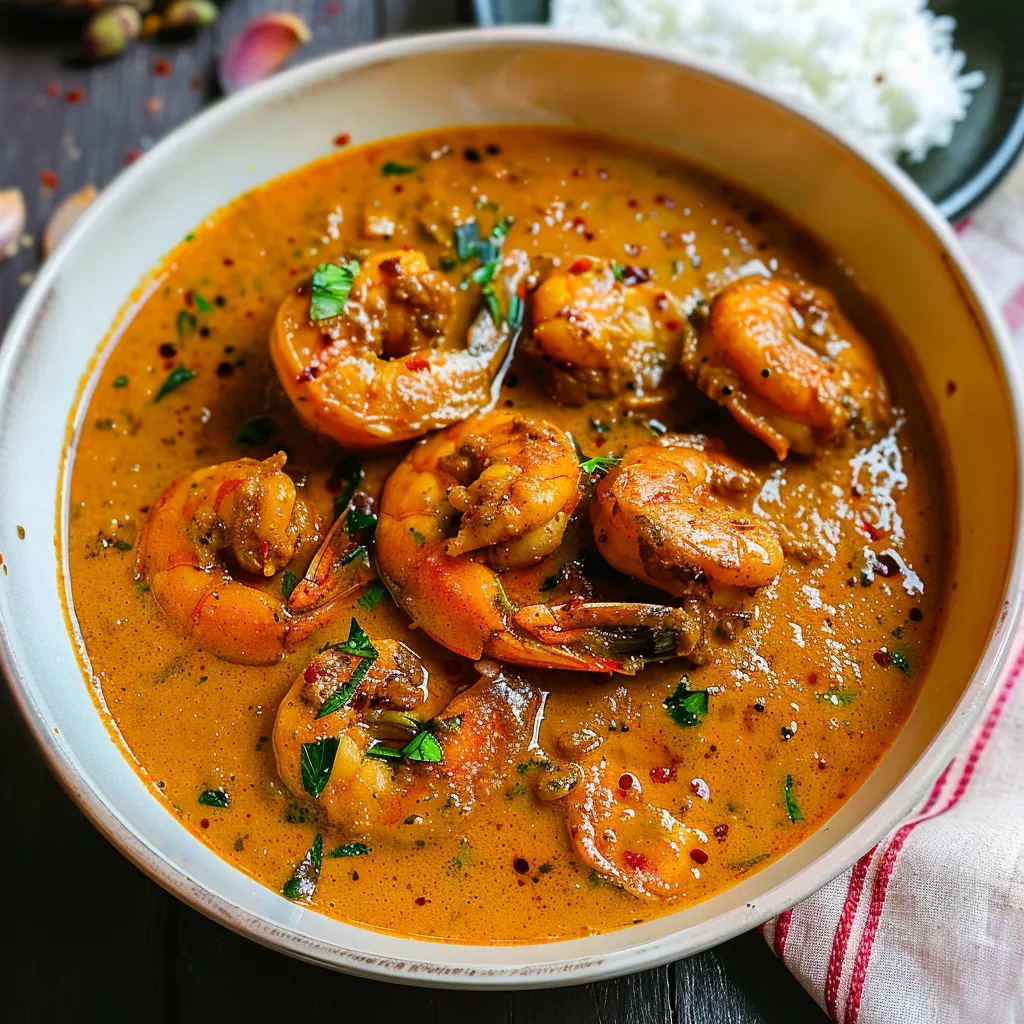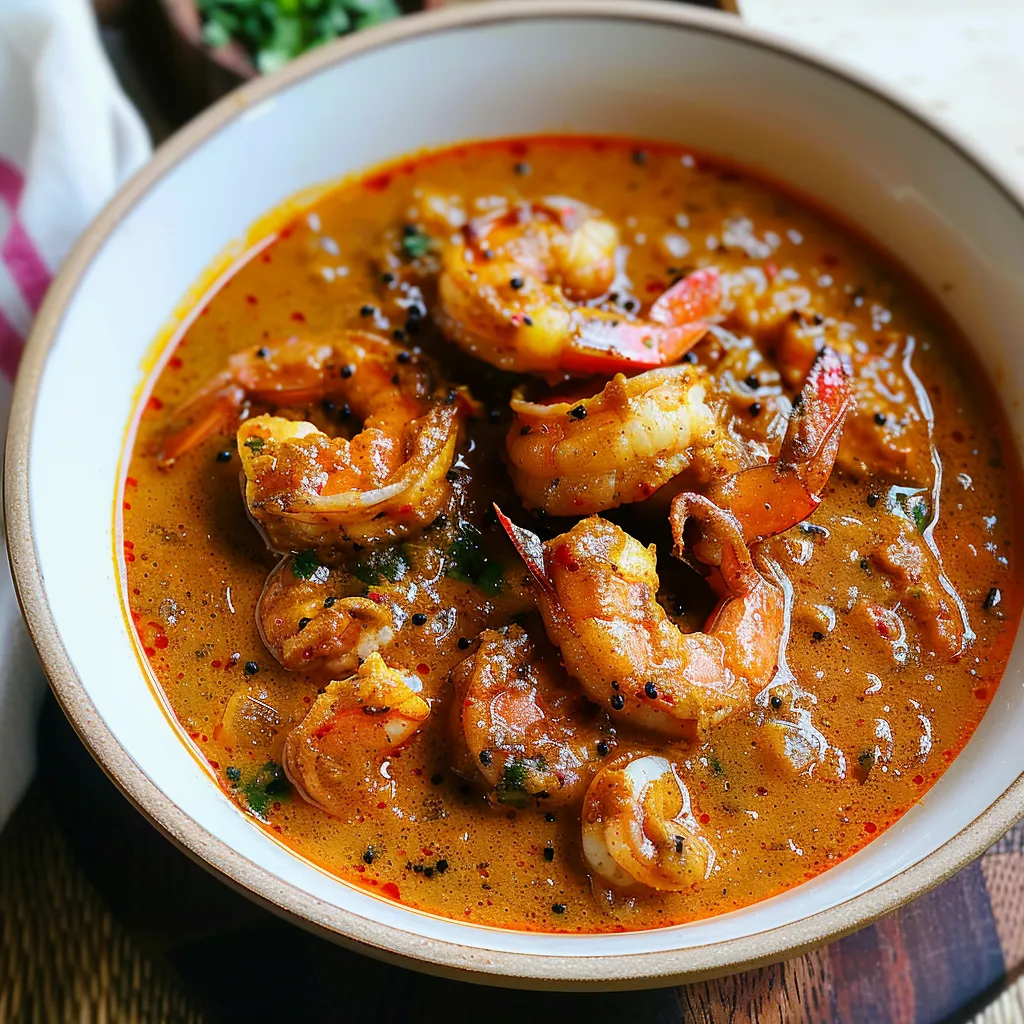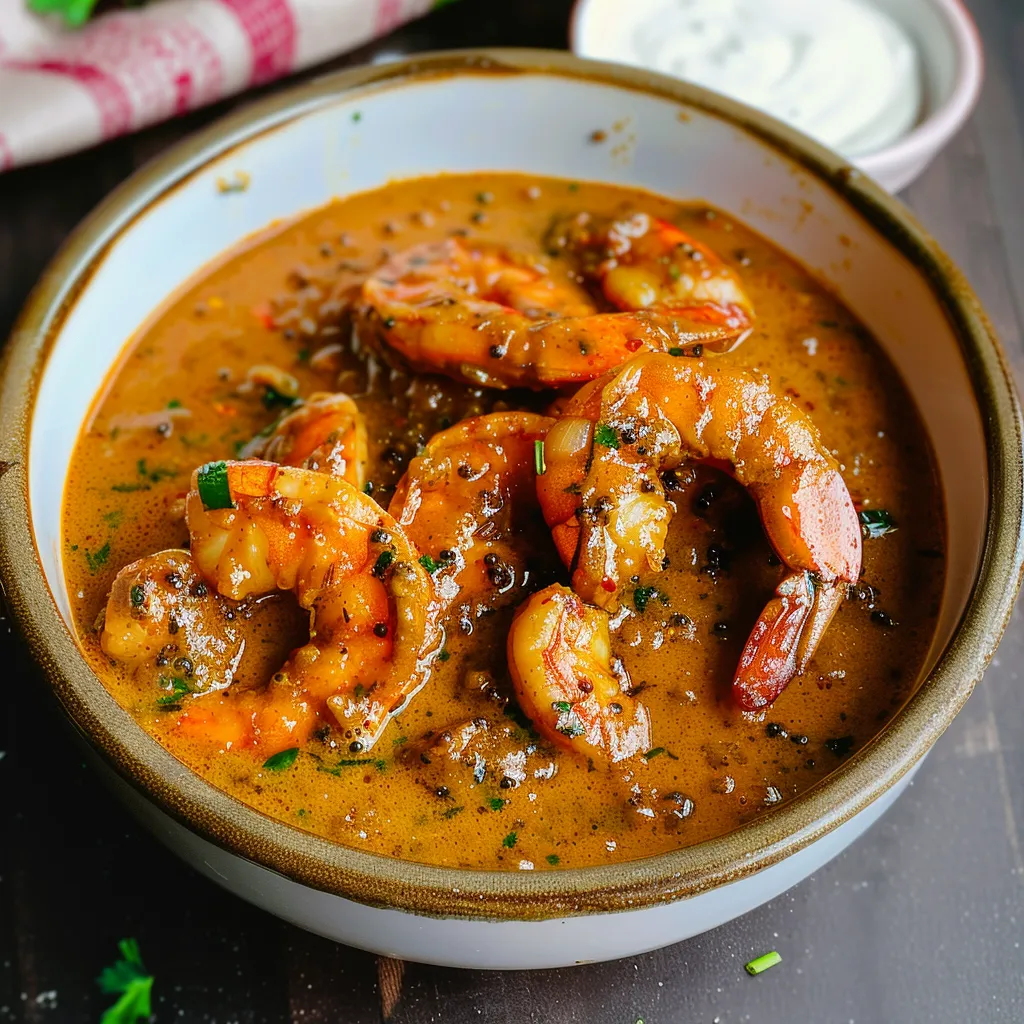 Pin it
Pin it
A cherished gem in Bengali food culture, Chingri Malaikari turns plump prawns into a decadent curry soaked in coconut milk. This fragrant masterpiece balances prawns' natural sweetness with bold spices, resulting in a lush, golden sauce that feels both elegant and soul-warming.
In my grandma's home, we only enjoyed this dish during celebrations. The second those whole spices hit the hot mustard oil, that wonderful smell would bring everyone running to the kitchen, waiting impatiently for their first bite.
Key Ingredients Breakdown
- Prawns: Go for fresh, medium ones with tails left on but heads taken off for a prettier look
- Mustard Oil: The sharp flavor can't be replaced if you want the real deal
- Coconut Milk: Don't skimp here - pick full-fat, first-press for ultimate creaminess
- Whole Spices: Cardamom, cinnamon, and cloves form your flavor foundation
- Yogurt: Brings a nice tang and helps make prawns extra tender
- Onion Paste: Needs to be super smooth for a velvety sauce
Crafting Your Malaikari Masterpiece
- Getting Prawns Ready:
- Mix your cleaned prawns with a bit of turmeric and salt, then let them sit while you grab everything else you need.
- Starting Your Sauce:
- Warm mustard oil until it smells less sharp, then toss in whole spices and watch them pop and sizzle.
- Making The Base:
- Add your flavor boosters in stages - garlic first, then onion paste, cooking each until they smell sweet instead of raw.
- Making It Creamy:
- Pour coconut milk in slowly, stirring with care so it stays smooth and doesn't break apart.
- Finishing Touch:
- Slip the prawns in at the very end, letting them cook gently in the fragrant sauce just until they turn pink.
 Pin it
Pin it
My family always adds a tiny bit of sugar at the end - a trick my mom showed me that balances out the spices and brings out the natural sweetness in the coconut milk.
Ideal Accompaniments
This curry tastes amazing with fluffy basmati rice that soaks up all that golden sauce. For a full Bengali feast, add some begun bhaja (fried eggplant slices) and a simple salad of cucumber and onion with lime juice. Sometimes I break with tradition and serve it alongside hot, buttery naan or flaky paratha.
Creative Twists
Try making it heartier by adding sliced mushrooms or small potatoes to the sauce. If you love spicy food, throw in some green chilies or a sprinkle of kashmiri chili powder. For fancy dinners, I make a deluxe version using jumbo prawns with a few strands of saffron.
Keeping Leftovers Fresh
Keep any extra portions in a sealed container in your fridge for up to two days. When reheating, do it slowly on low heat, adding a splash of warm water or coconut milk to keep the sauce nice and loose. Don't freeze this dish as it'll mess up both the prawns' texture and make the coconut milk separate.
 Pin it
Pin it
This dish captures the heart of Bengali coastal cooking. The beautiful mix of coconut milk, mustard oil, and fresh prawns creates something truly unforgettable. Whenever I cook this curry, those familiar smells transport me back to family celebrations where this dish was always the star of our table.
Frequently Asked Questions
- → What size prawns work best for Chingri Malaikari?
- Go for medium-sized prawns (about 500g) as they stay soft while cooking and soak up all the tasty curry flavors.
- → Can I use coconut cream instead of coconut milk?
- Sure, just mix coconut cream with a bit of water for an even creamier curry.
- → How do I prevent the curry from becoming too thick?
- Slowly pour in warm water while you're cooking until you get the thickness you want.
- → Why do we need to rest the curry before serving?
- Letting it sit for 5-10 minutes helps all the flavors come together and lets the garam masala work its magic.
- → Can I make this curry in advance?
- Absolutely, it'll taste even better tomorrow when all the flavors have had time to mix.
